Crew 65 – Assigned 755th Squadron – July 29, 1943

Crew 65 – Completed tour
| Rank | Name | Serial # | Pos | Date | Status | Comments |
|---|---|---|---|---|---|---|
| 1Lt | Robert H. Hannaman | 743444 | Pilot - Ops Officer | 29-Jun-44 | POW | German rpt says downed by fighter |
| 1Lt | William C Rowland | 805678 | Co-pilot | Aug-44 | CT | Awards - Distinguished Flying Cross |
| 1Lt | Robert D MacGeorge | 805310 | Navigator | Aug-44 | CT | Awards - Distinguished Flying Cross |
| 1Lt | William C Lawrence | 752819 | Bombardier | Aug-44 | CT | Awards - Distinguished Flying Cross |
| T/Sgt | Ernest J Hutchins | 11127897 | ROG | Aug-44 | CT | Awards - Distinguished Flying Cross |
| T/Sgt | James R Holman | 7086375 | Flight Engineer | Aug-44 | CT | Awards - Distinguished Flying Cross |
| S/Sgt | Austin R Stirrat | 19128153 | Aerial Gunner/2E | Aug-44 | CT | Awards - Distinguished Flying Cross |
| S/Sgt | Walter R Newbury | 33274227 | Aerial Gunner/2E | Aug-44 | CT | Awards - Distinguished Flying Cross |
| S/Sgt | Edward J Mickey | 13127848 | Armorer-Gunner | Aug-44 | CT | Awards - Distinguished Flying Cross |
| S/Sgt | Doyle D Parker | 36112826 | Armorer-Gunner | Aug-44 | CT | Awards - Distinguished Flying Cross |
The 755th Squadron was activated on July 28, 1943 at Gowen Field in Boise, Idaho. Crew 65 was the second crew to be assigned on July 29, 1943. This crew is a bit complex in regard to its pilots.
Squadron records show 2Lt Robert H. Hannaman as the pilot of Crew 65 on July 29, 1943. Sometime later, a movement order dated October 5, 1943 shows 1Lt Robert V. Whitlow, a 1943 West Point Graduate, as pilot, 2Lt Robert Geatches as co-pilot, and 2Lt Albert F. Pogue as bombardier. Only one of these officers would eventually be a part of this crew. Lt Pogue went to the crew of Capt Howard W. Slaton, and Lt Geatches was transferred to another unit prior to leaving Tonopah. He would later be killed in a B-24 accident in Alaska. At some point prior to January 1944, Whitlow was made the 755th Squadron Operations Officer flying to England as a passenger with Lt Maurice Bittler and crew.
The crew flew a B-24H named Tail Wind via the Southern Route to the ETO in January 1944. With Hannman as pilot were, 2Lt William C. Rowland, co-pilot, 2Lt Robert D. MacGeorge, navigator, and 2Lt William C. Lawrence, bombardier. These three officers were permanent additions to the crew. The enlisted men remained the same through training and combat.
Shortly after arriving at Horsham St. Faith, it appears that Hannaman and Whitlow changed jobs, with the former going to the 755th Squadron Operations Office and the latter back to pilot Crew 65. Whitlow is credited with 30 combat missions flown, the first on March 2, 1944 to Frankfurt, Germany (the group’s first mission) and the last on August 1, 1944 when the 755th Squadron hit targets of opportunity in France. Hannaman flew a number of missions as 1st pilot and several as co-pilot to various 755th Squadron pilots. On the June 29, 1944 mission to Aschersleben, Germany, while flying as Instructor Pilot to the newly arrived crew of Lt William P. Perkinson, his aircraft was shot down, and he along with Perkinson’s crew became POWs.
Lt William Rowland also flew several missions as 1st pilot before the completion of his tour.
Sgt Austin R. Stirrat does not appear on several early mission load lists for this crew, however, he did fly on D-Day and July 12, 1944 as gunner with Whitlow. From correspondence with the family of a crew member, it is possible that Stirrat was ill during the early part of the crew’s tour, and missed out on many of their missions. Of the available loading lists for these early missions, there are two different gunners listed in place of Stirrat – S/Sgt Oscar J. Crowley (Crew 61 – Bittler) on the March 6, 1944 raid on Berlin; and S/Sgt Clarence Leonard on the April 22, 1944 mission to the marshalling yards at Hamm, Germany.
The entire crew was awarded the Distinguished Flying Cross in August 1944.
After his tour was complete, Captain Whitlow volunteered for a stint with the 2nd Scouting Force as its Operations Officer. He flew a P-51 Mustang ahead of the bomber formations and reported weather conditions over the planned route. He was credited with at least two aerial victories during his time as a Scout pilot, both occurring on November 26, 1944. In addition to receiving the DFC for 30 combat missions flown with the 458th, Whitlow received an Oak Leaf Cluster to the DFC and a Silver Star while with the 2nd Scouting Force.
Missions – Robert Whitlow as pilot
| Date | Target | 458th Msn | Pilot Msn | Cmd Pilot | Ld | Serial | RCL | Sqdn | A/C Msn | A/C Name | Comments |
|---|---|---|---|---|---|---|---|---|---|---|---|
| 02-Mar-44 | FRANKFURT | 1 | 1 | 41-28720 | N | J3 | 1 | UNKNOWN 004 | |||
| 05-Mar-44 | BORDEAUX/MERIGNAC | 3 | 2 | SULLIVAN, JF | D2 | 42-100366 | B | Z5 | 3 | MIZPAH | |
| 06-Mar-44 | BERLIN/GENSHAGEN | 4 | 3 | OLLUM | D2 | 42-100311 | A | 7V | 3 | YOKUM BOY | |
| 15-Mar-44 | BRUNSWICK | 7 | 4 | OLLUM | D2 | 42-100425 | D | J3 | 2 | THE BIRD | |
| 16-Mar-44 | FRIEDRICHSHAFEN | 8 | 5 | JAMISON | L2 | 42-100433 | B | J3 | 4 | BIG DICK HARD TO HIT | |
| 21-Mar-44 | WATTEN, near ST. OMER | 10 | 6 | WRIGHT | D1 | 42-100425 | D | J3 | 3 | THE BIRD | |
| 26-Mar-44 | BONNIERES | 14 | 7 | 42-100407 | A | J3 | 4 | LITTLE LAMBSY DIVEY | |||
| 27-Mar-44 | BIARRITZ | 15 | 8 | HINCKLEY | D2 | 42-100407 | J3 | 5 | LITTLE LAMBSY DIVEY | ||
| 08-Apr-44 | BRUNSWICK/WAGGUM | 17 | 9 | 42-100425 | D | J3 | 6 | THE BIRD | |||
| 10-Apr-44 | BOURGES A/F | 19 | 10 | JAMISON | L2 | 42-100365 | B | 7V | 11 | WOLFGANG | |
| 22-Apr-44 | HAMM M/Y | 25 | 11 | 42-100433 | B | J3 | 11 | BIG DICK HARD TO HIT | |||
| 26-Apr-44 | PADERBORN A/F | 28 | 12 | FEILING | L1 | 42-100407 | A | J3 | 9 | LITTLE LAMBSY DIVEY | HANDWRITTEN |
| 01-May-44 | MARQUISE/MIMOYECQUES | 32 | 13 | HINCKLEY | D1 | 42-110172 | D | Z5 | 3 | UNKNOWN 017 | NIXON - LEAD NAV |
| 07-May-44 | OSNABRUCK | 36 | 14 | 42-110059 | E | J3 | 11 | UNKNOWN 056 | |||
| 09-May-44 | ST. TROND | 38 | 15 | OLLUM | L | 42-110059 | E | J3 | 12 | UNKNOWN 056 | FARMER (LEAD NAV?) |
| 11-May-44 | EPINAL | 39 | 16 | 42-110059 | E | J3 | 13 | UNKNOWN 056 | EARLY RETURN Tgt of Opp | ||
| 12-May-44 | BOHLEN | 40 | 17 | OLLUM | L | 42-100433 | B | J3 | 20 | BIG DICK HARD TO HIT | |
| 24-May-44 | VILLEROCHE, near MELUN | 46 | 18 | FEILING | L1 | 42-110059 | E | J3 | 14 | UNKNOWN 056 | KING (LEAD NAV?) |
| 28-May-44 | ZEITZ | 49 | 19 | 42-100407 | A | J3 | 19 | LITTLE LAMBSY DIVEY | NAV - GRIBI | ||
| 02-Jun-44 | STELLA/PLAGE | 53 | 20 | 42-110059 | E | J3 | 16 | UNKNOWN 056 | |||
| 06-Jun-44 | COASTAL AREAS | 56 | 21 | 42-110059 | E | J3 | 17 | UNKNOWN 056 | MSN #1 | ||
| 11-Jun-44 | BLOIS | 62 | 22 | 42-110059 | E | J3 | 18 | UNKNOWN 056 | |||
| 14-Jun-44 | DOMLEGER | 65 | ABT | WILLIAMSON | L | 42-110059 | E | J3 | -- | UNKNOWN 056 | #1 ENGINE OIL LEAK |
| 17-Jun-44 | TOURS | 68 | 23 | JAMISON | L1 | 42-110059 | E | J3 | 19 | UNKNOWN 056 | |
| 19-Jun-44 | REGNAUVILLE | 71 | 24 | 42-110059 | E | J3 | 20 | UNKNOWN 056 | MSN #1 | ||
| 21-Jun-44 | BERLIN | 75 | 25 | FEILING | L1 | 42-110059 | E | J3 | 21 | UNKNOWN 056 | |
| 24-Jun-44 | ST OMER | 78 | 26 | BOOTH | L1 | 42-110059 | E | J3 | 23 | UNKNOWN 056 | MSN #2 |
| 05-Jul-44 | LE COULET, BEL A/F | 84 | 27 | 42-100433 | B | J3 | 31 | BIG DICK HARD TO HIT | |||
| 12-Jul-44 | MUNICH | 89 | 28 | 42-110059 | E | J3 | 25 | UNKNOWN 056 | |||
| 17-Jul-44 | 3 NO BALLS | 92 | 29 | JAMISON | L1 | 42-110059 | E | J3 | 26 | UNKNOWN 056 | |
| 25-Jul-44 | ST. LO AREA "B" | 98 | 30 | LaROCHE | L1 | 42-110059 | E | J3 | 30 | UNKNOWN 056 | |
| 01-Aug-44 | T.O.s FRANCE | 100 | 31 | OLLUM | L1 | 42-110059 | E | J3 | 31 | UNKNOWN 056 |
Missions – William Rowland as pilot
| Date | Target | 458th Msn | Pilot Msn | Serial | RCL | Sqdn | A/C Msn | A/C Name | Comments |
|---|---|---|---|---|---|---|---|---|---|
| 04-Jun-44 | BOURGES A/F | 54 | 1 | 41-29288 | L | J3 | 24 | BIG-TIME OPERATOR | |
| 06-Jun-44 | COASTAL AREAS | 56 | ABT | 41-28735 | V | J3 | -- | UNKNOWN 005 | MSN #1 - #1 ENGINE |
| 07-Jun-44 | LISIEUX | 59 | 2 | 41-29359 | J | J3 | 39 | TAIL WIND | |
| 08-Jun-44 | PONTAUBAULT | 60 | 3 | 41-29300 | Y | J3 | 28 | LORELEI | ANA - #3 ENGINE |
| 18-Jun-44 | WATTEN | 70 | NTO | 41-28735 | V | J3 | -- | UNKNOWN 005 | MSN #2 - REASON UNK |
| 20-Jun-44 | OSTERMOOR | 73 | 4 | 42-95316 | N | J3 | 23 | PRINCESS PAT | MSN #1 |
June 29, 1944

Portion of the 755th Bombardment Squadron Narrative for June 1944…
Crews Missing in Action – May and June
Lt Hanaman, who failed to return from the mission of 29th of June, was the junior partner of Major Jamison and Captain Ollum. Well liked by all officers and enlisted men, with whom he came into contact, he was a good sport and proved he could “take it” in more ways than just piloting. On his 24th birthday on the 13th of June, he shyly condescended to a spanking in the operations office – taking all 25 of the hard hits.
————————-
MACR 7086
Only crew report identifiable with Hannaman states that he was last seen in target area dropping behind formation and losing altitude, but with all engines working. No reason known.
Missions – Robert Hannaman as pilot and Command Pilot
| Date | Target | 458th Msn | Pilot Msn | Serial | RCL | Sqdn | A/C Msn | A/C Name | Comments |
|---|---|---|---|---|---|---|---|---|---|
| 05-Mar-44 | BORDEAUX/MERIGNAC | 3 | 1 | 41-28720 | N | J3 | 3 | UNKNOWN 004 | Fly w/WELLS as CmdP |
| 15-Mar-44 | BRUNSWICK | 7 | 2 | 42-52441 | I | J3 | 5 | LAST CARD LOUIE | |
| 18-Mar-44 | FRIEDRICHSHAFEN | 9 | 3 | 42-52441 | I | J3 | 6 | LAST CARD LOUIE | |
| 23-Mar-44 | OSNABRUCK | 12 | 4 | 41-29359 | J | J3 | 5 | TAIL WIND | |
| 24-Mar-44 | ST. DIZIER | 13 | 5 | 42-109812 | D | 7V | 8 | UNKNOWN 016 | |
| 22-Apr-44 | HAMM M/Y | 25 | ABT | 41-29359 | J | J3 | -- | TAIL WIND | Fly w/WELLS as CmdP - ABORT |
| 25-Apr-44 | MANNHEIM A/F | 27 | 6 | 41-29359 | J | J3 | 18 | TAIL WIND | |
| 26-Apr-44 | PADERBORN A/F | 28 | 7 | 42-52274 | H | J3 | 1 | UNKNOWN 029 | |
| 05-May-44 | SOTTEVAST | 35 | 8 | 42-110059 | E | J3 | 10 | UNKNOWN 056 | Fly w/CURTIS as CmdP |
| 28-May-44 | ZEITZ | 49 | 9 | 42-52274 | H | J3 | 4 | UNKNOWN 029 | Fly w/HANCOCK as CmdP |
| 18-Jun-44 | WATTEN | 70 | ABT | 41-28719 | Q | J3 | -- | PADDLEFOOT | MSN #2 - EXCESS FUEL CONS |
| 20-Jun-44 | OSTERMOOR | 73 | 10 | 42-95120 | M | J3 | 15 | HOOKEM COW / BETTY | MSN #1 |
| 24-Jun-44 | ST OMER | 79 | 11 | 42-95008 | R | J3 | 18 | UNKNOWN 035 | MSN #3 |
| 28-Jun-44 | SAARBRUCKEN | 81 | 12 | 42-100425 | D | J3 | 14 | THE BIRD | Fly w/PERKINSON as CmdP |
| 29-Jun-44 | ASCHERSLEBEN | 82 | 13 | 42-95008 | R | J3 | 21 | UNKNOWN 035 | SHOT DOWN |
August 1, 1944 – Combat Tour Complete
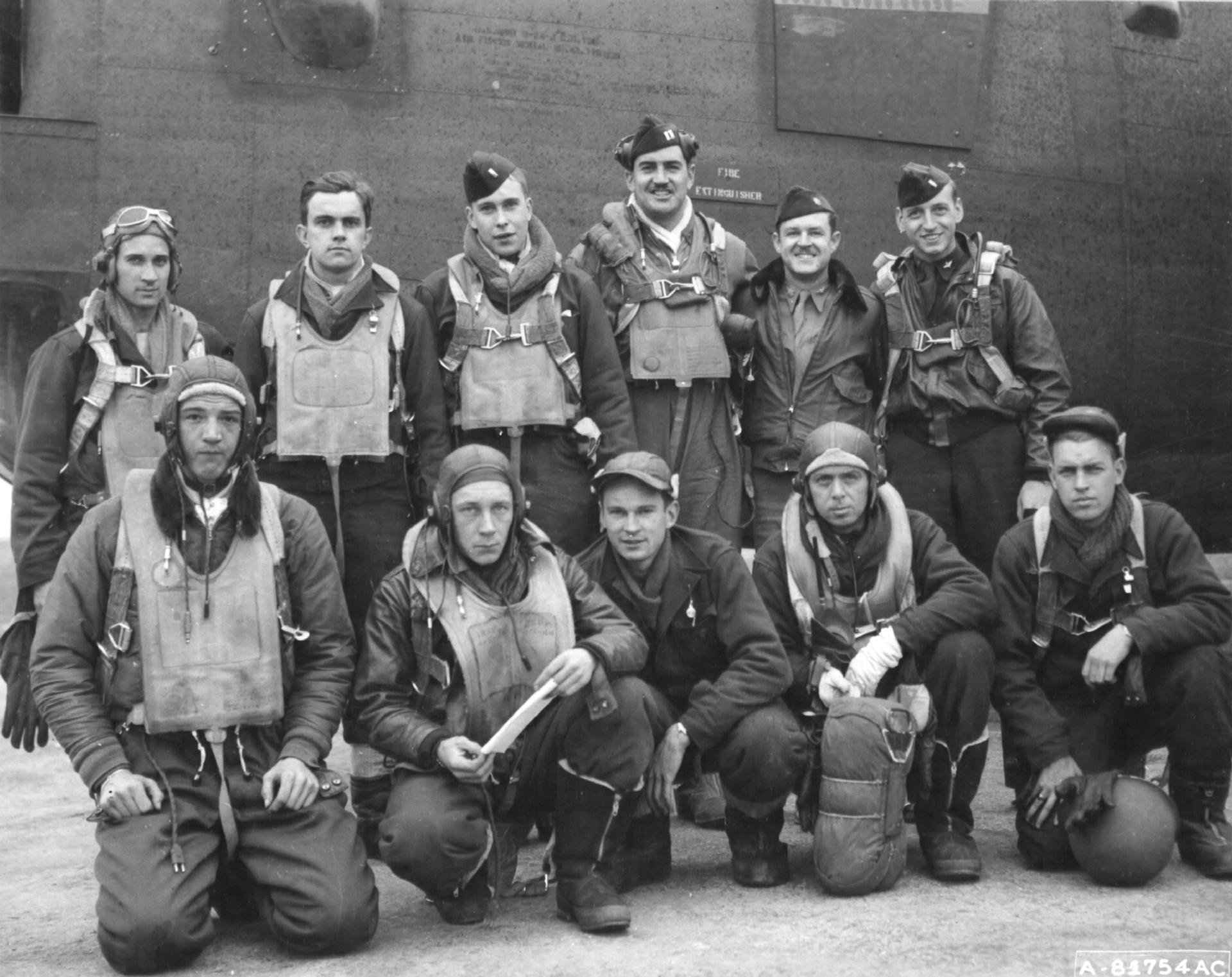
8th Air Force Publicity Photos – B-24 Liberator Crew
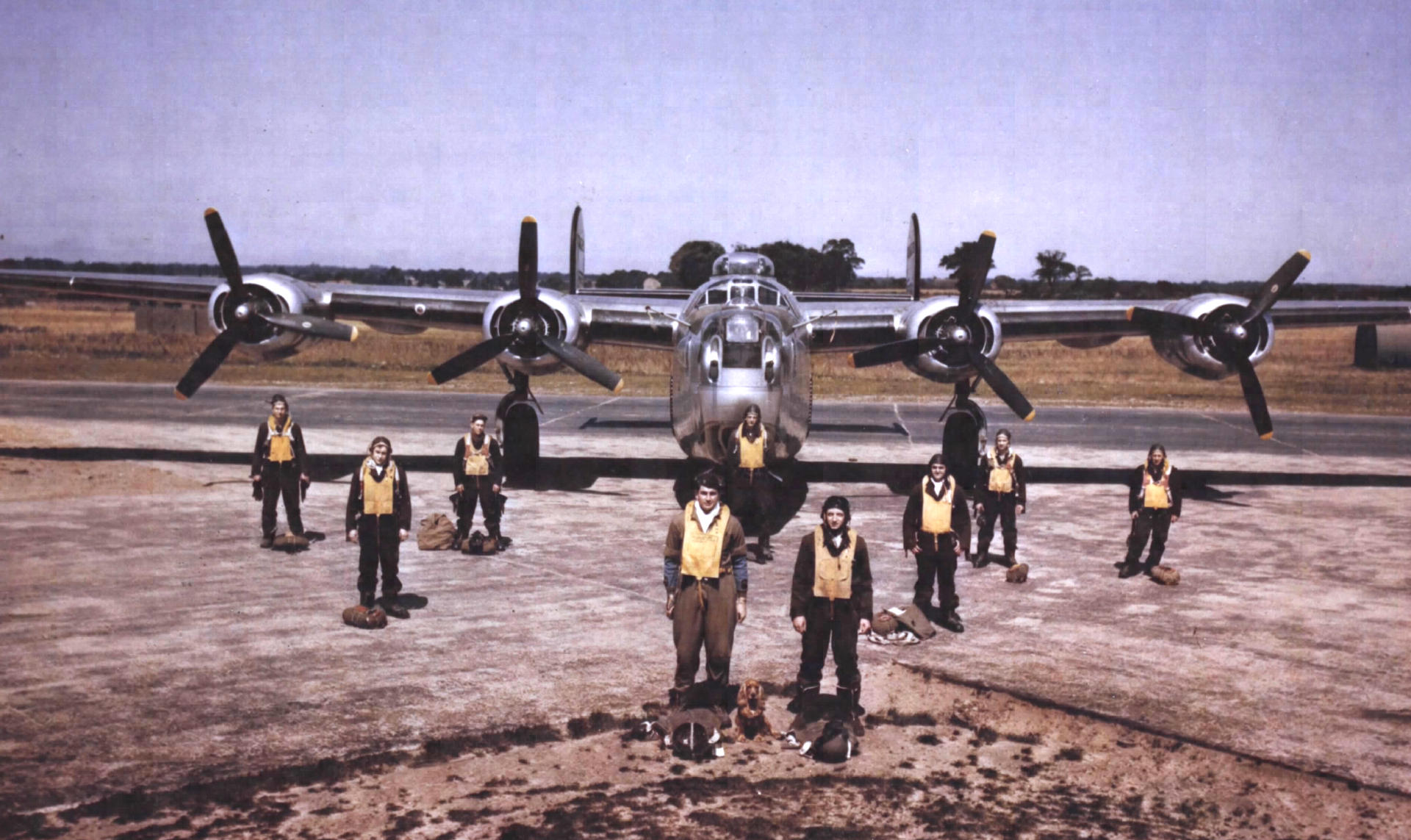
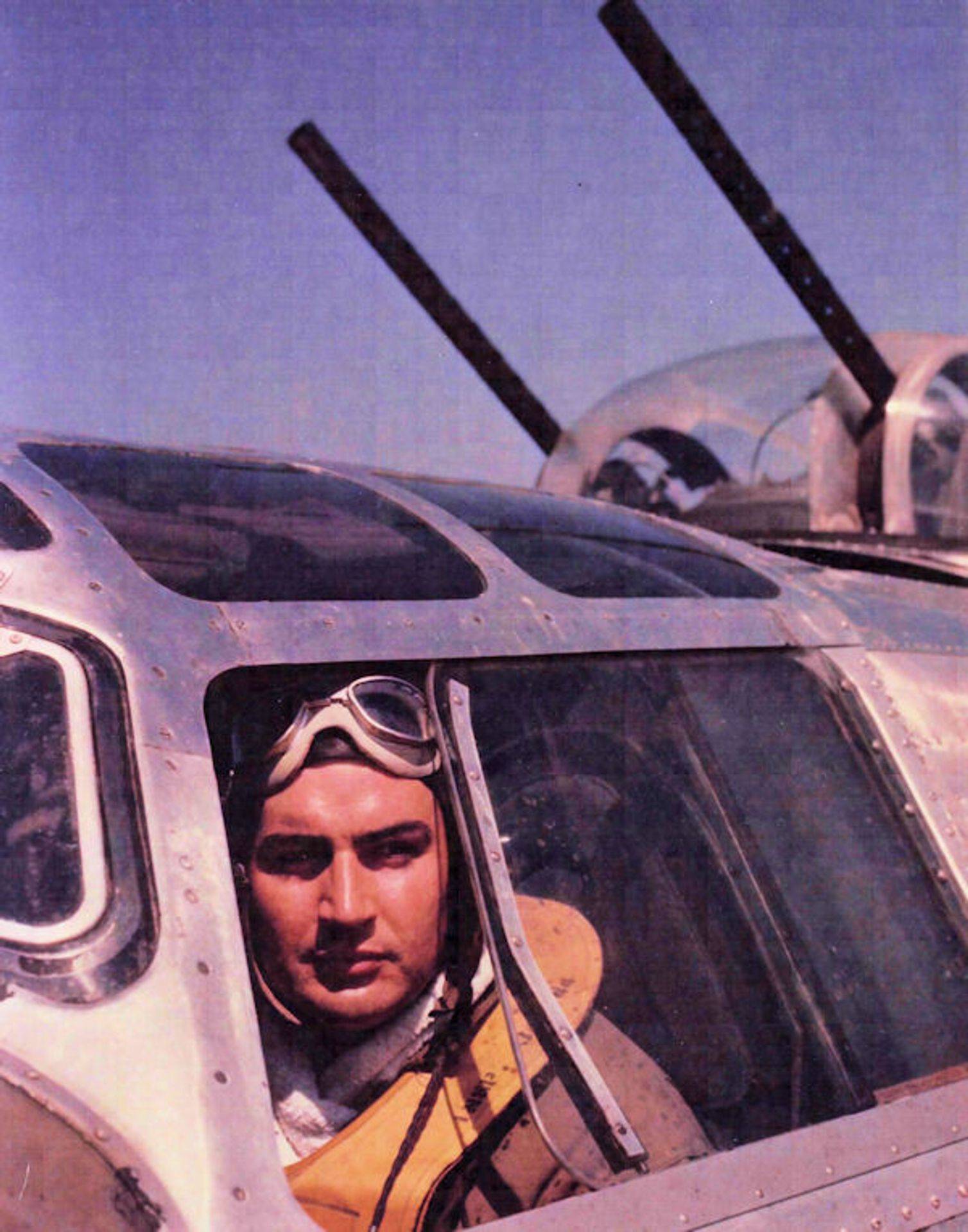

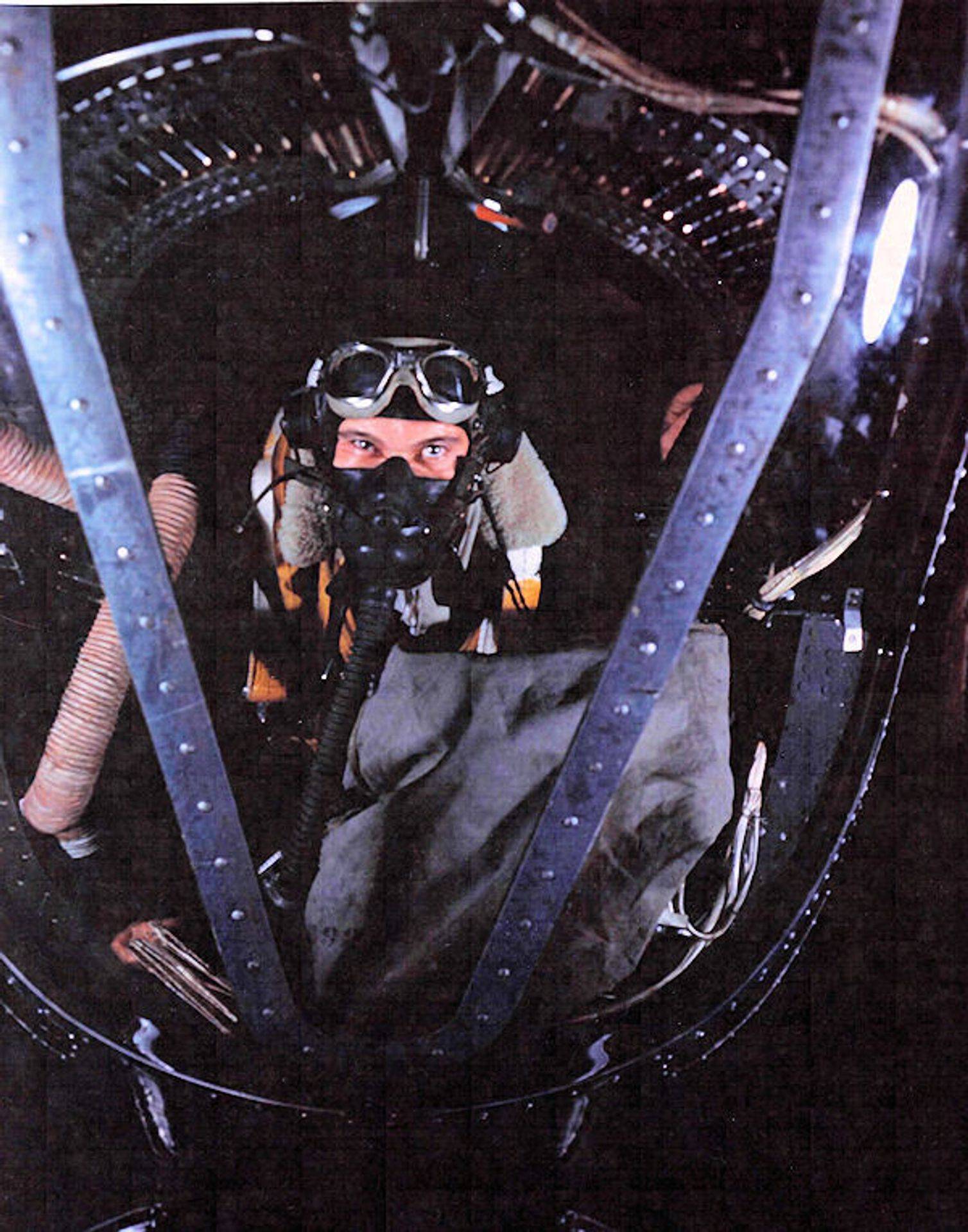
Capt Robert Whitlow, Lt William Rowland, and Lt William Lawrence
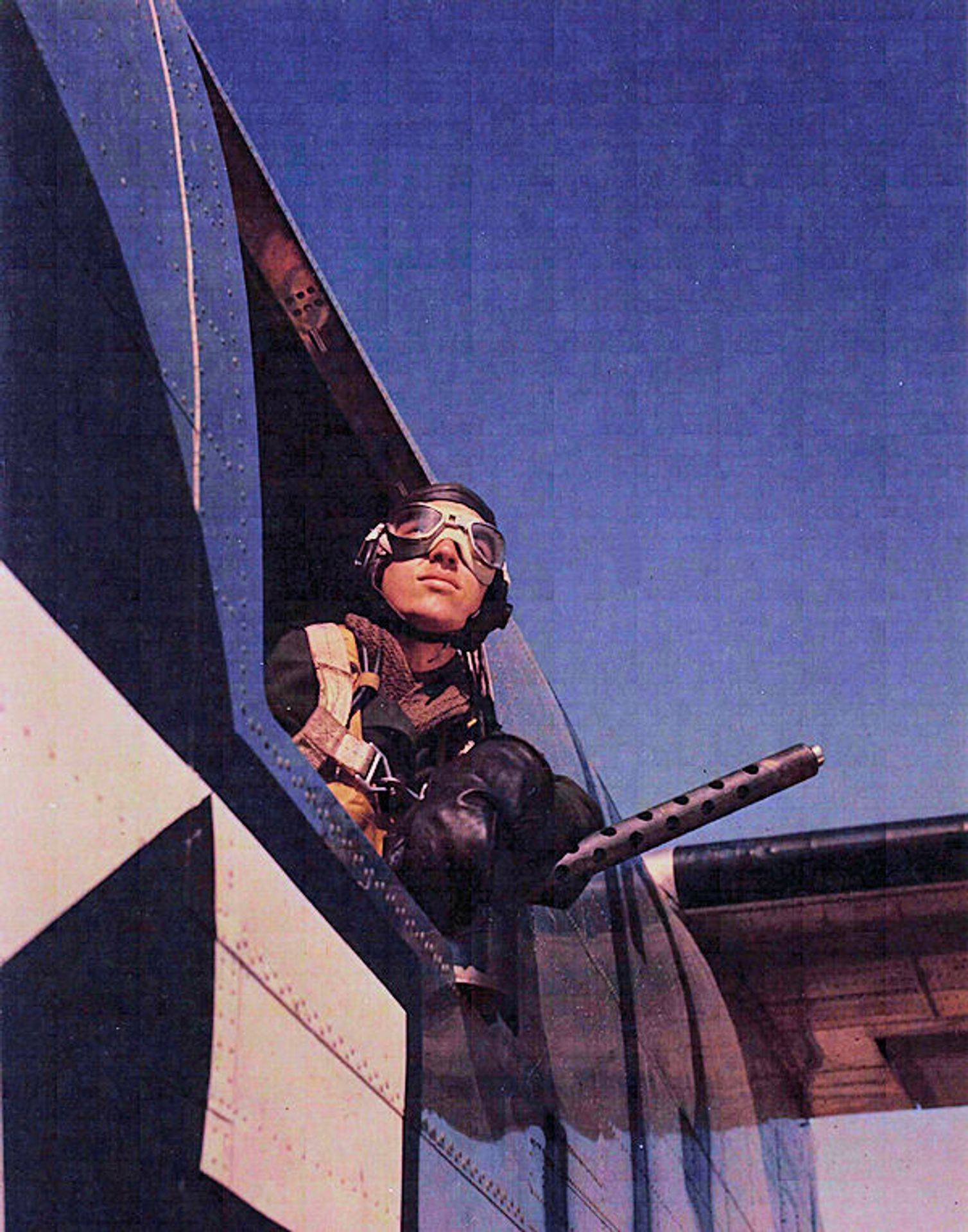
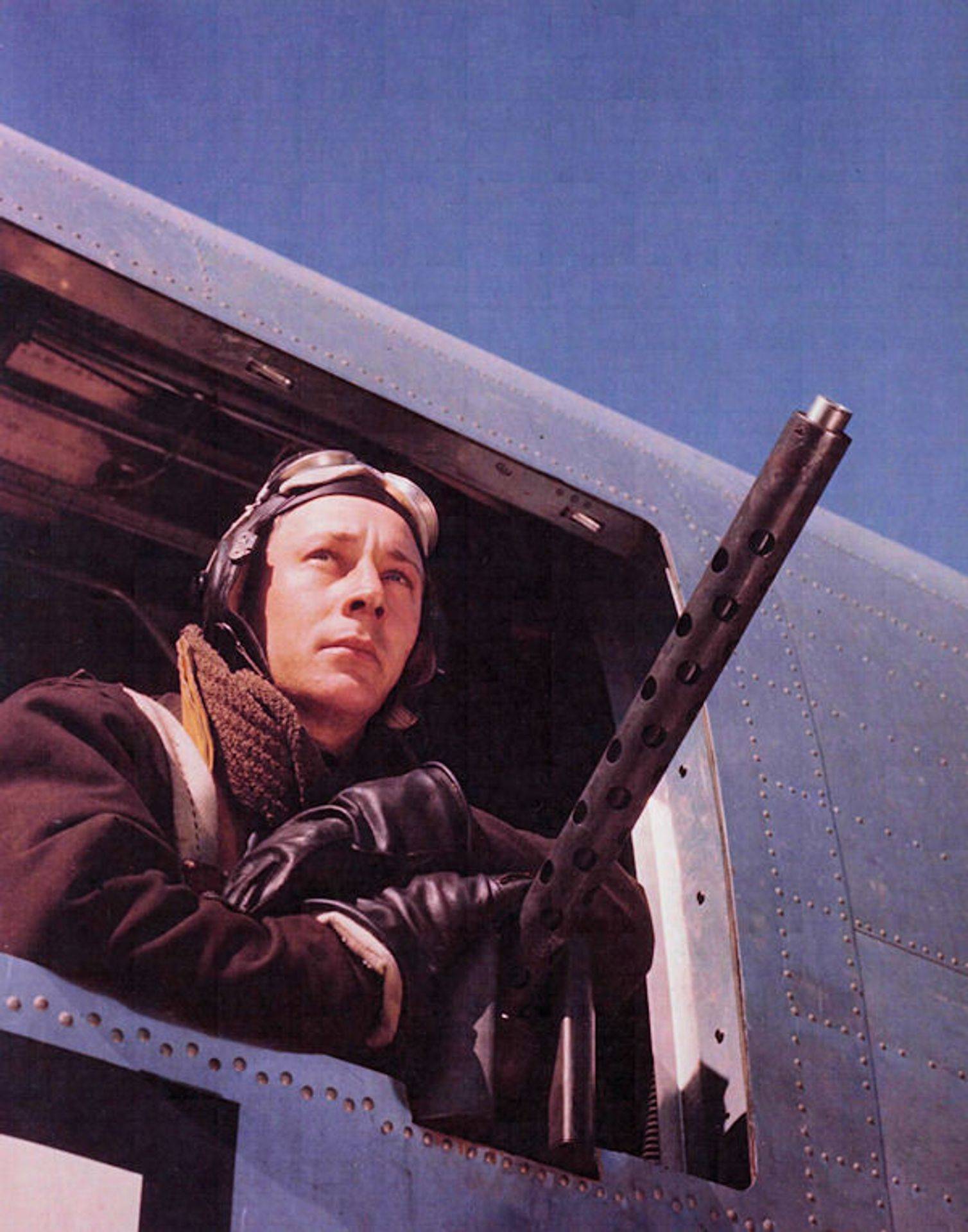
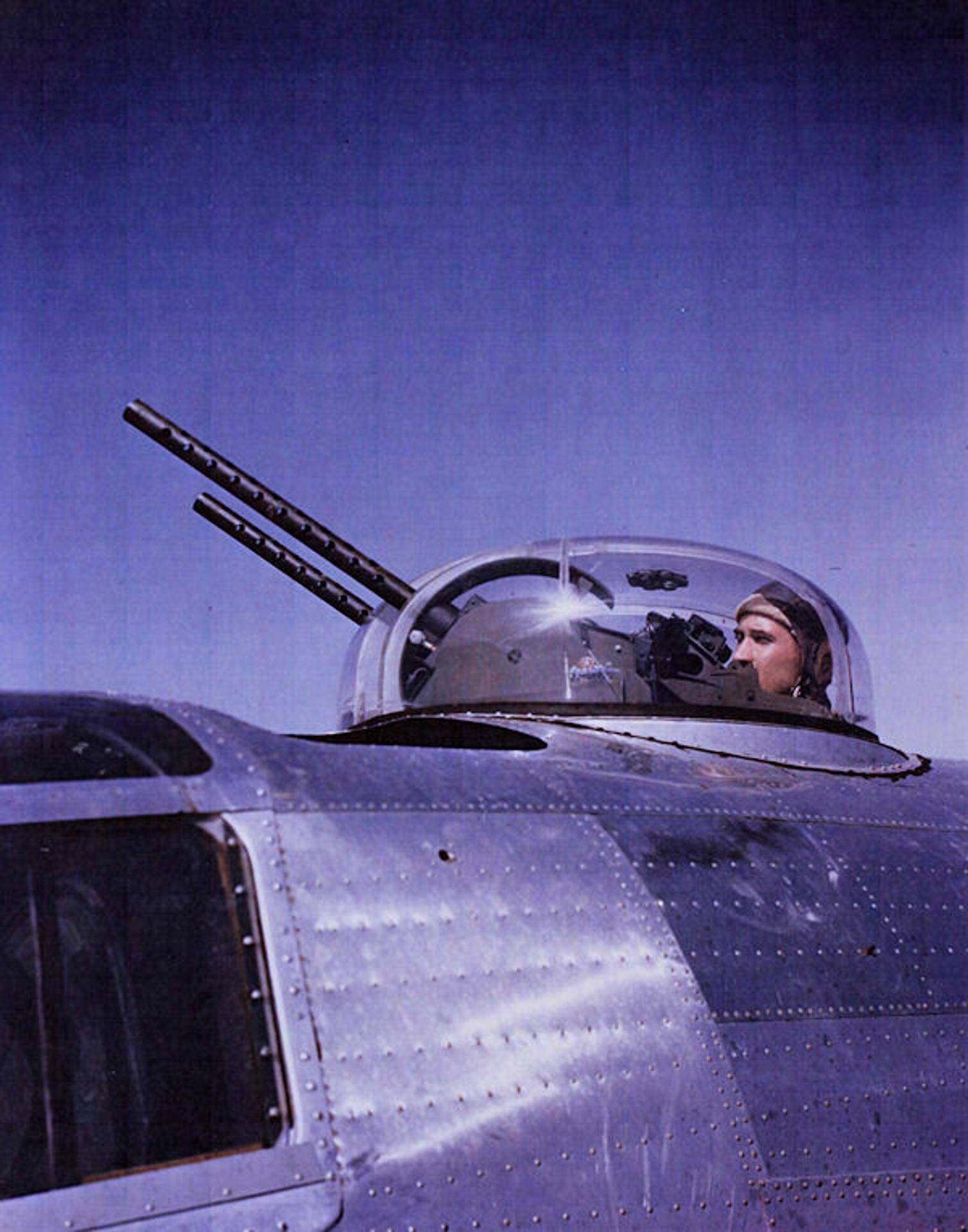
T/Sgt Ernest Hutchins, T/Sgt James Holman, and S/Sgt Walter Newbury


Lt Robert MacGeorge and S/Sgt Edward Mickey
2nd Scouting Force
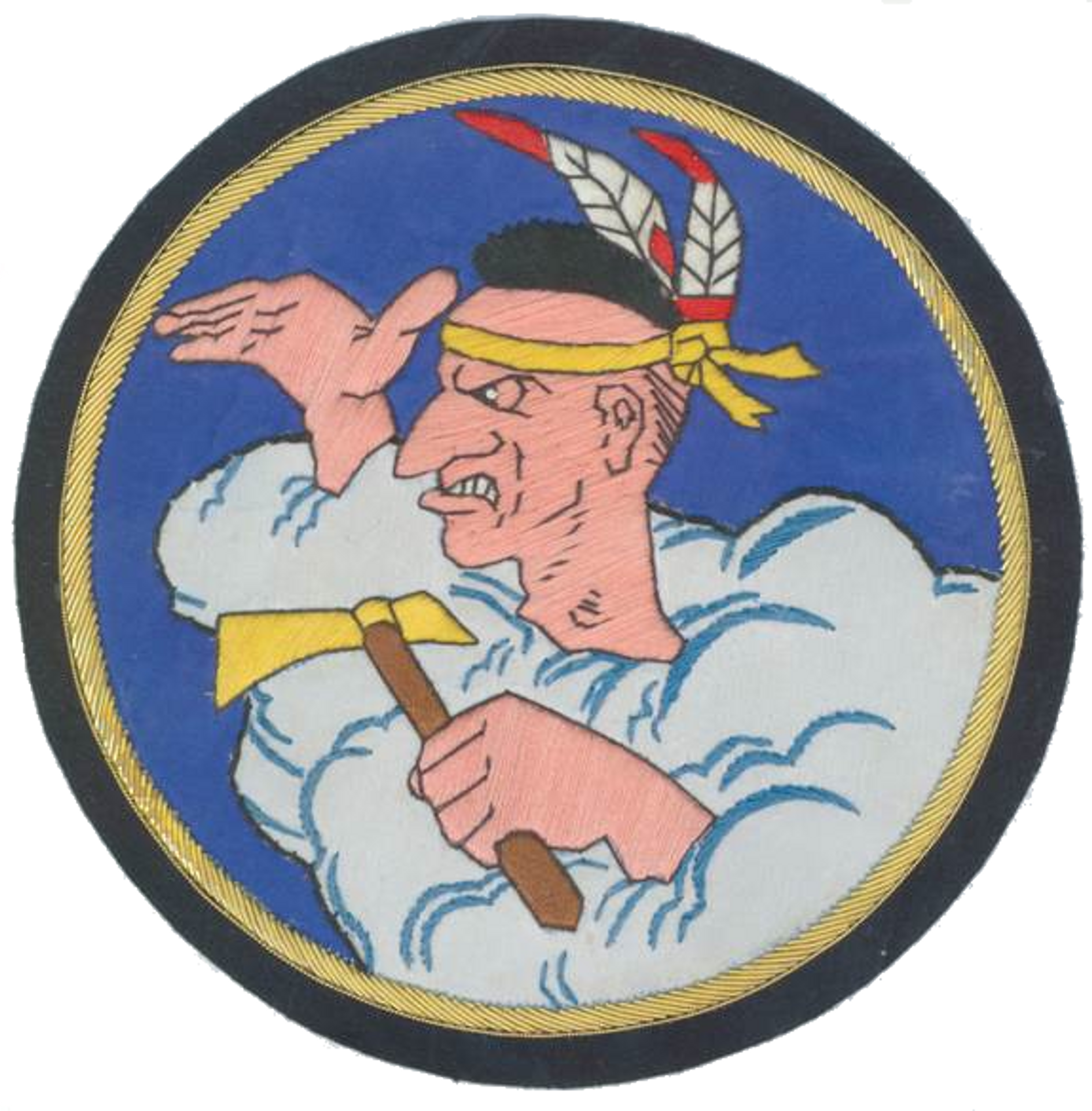
The following information and photos reproduced here is from Fighting Scouts of the Eighth Air Force 1944-1945 by E. Richard Atkins with his very kind permission.
————————-
The 2nd Scouting Force, under the command of Lt Col John A. Brooks III, was formed in August 1944. As a seasoned bomber leader, Lt Col Brooks had long been aware of the problems associated with assembling a bomber stream and getting it to the target and back, even under the best of conditions. He was all too familiar with the havoc that weather wrought in every aspect of the operation and had often spoken of using fighters as Scouts. Early in 1944 he had the opportunity to assist in assembling Wings and an entire Air Division, using the P-47 as his platform, and became convinced that Scouting was a must. He began to lobby 2nd Air Division headquarters for such a force. About that time, Bud Peaslee opened the door with General Doolittle and Col Brooks wasted no time in assuring that the 2nd Scouting Force would exist and that he would lead.
When Captain Whitlow completed his tour with the 458th he joined the 2nd Scouting Force as its Operations Officer.
26 NOVEMBER MISSION
On 26 November 1944, the 2nd Scouting Force. led by Captain Bob Whitlow, was engaged in one of the fiercest air battles ever encountered by the 8th Air Force. The battle is described from the viewpoint of the Scouts. The official log for 26 November 1944 summarizes this deadly mission with the following words:
Mission 37 26 November 1944 2AD F.O. 529 Target: Bielefeld, Misburg
Captain Moore led twelve ship force. Captain Moore’s radio went out and Captain Whitlow assumed lead. Advised Misburg 1/10 covered plus very effective smoke screen. Bielefeld 10/10 covered. Bombing fair to good to unobserved. A large gaggle of FW 190’s (200 plus) observed N of IP. E/A split into two sections; fighter escort appeared to go after one section of 75 to 100. The remainder of E/A attacked the last box of B-24’s in waves, line abreast from 10-11 o’clock high. Scouts top flight intercepted 2nd wave of E/A and lead flight intercepted 3rd wave. Encounter lasted approximately thirty-five minutes. Claims were 6-1-2. Lt Whalen accounting for three [destroyed], Lieutenant Ceglarski for one, and Captain Whitlow two. Lt Miller got one probable and one damaged. And Lt Marmon [is credited with] one damaged. It is believed that [the] Scouts prevented more serious bomber losses. In [a] commendation received at 2206, Gen Kepner, CG 2AD, said “My personal commendation for your excellent results on today’s mission.”


AS BOB WHITLOW REMEMBERS THE MISSION
“On the 26 Nov 44 mission I remember so very vividly, we (the Scouts) had just finished watching the bomb impacts on the target and we were taking up a generally parallel course to the B-24’s, as they had swung away from the target toward the west and generally homeward from their bombing run. We were maybe 2,000 feet above and perhaps one-half mile to the south and east, a little behind the stream. We had been going along routinely for a short while when a frantic distress call from the last group of B-24’s was received. Backing up maybe 20 minutes, the B-24’s had been under fighter attack just before they entered the flak zone, which always surrounded a prime target and always accompanied any bombing run.
“The assigned Fighter Escort Squadrons had intercepted the FW-190’s and were scattered all over the sky on the pre-strike side of the target in pursuit to destroy the attacking FW-190’s, leaving the post-strike bombers naked. Because of our mission, we stayed with the bombers to observe the strike impacts, which is why we were the only fighters in the area when a follow-up and major FW-190 attack of around 100+ aircraft began. We turned roughly perpendicular to the stream, but didn’t reach it before the first of the 190’s came through.
“I’ll never forget the sight of those 10-12 bombers and 5-6 FW-190’s aflame and falling out of the formation, just like hits in a covey of quail. We met the 190’s coming off their attack run, and it broke up their re-grouping pattern, causing a couple of circles with those 190’s. We went up, over and across the bombers and met the second wave of attackers just before they got to the stream.
“Again we created chaos in their attack, and the whole thing degenerated into individual battles. The Scouts had eight P-51’s there, manned by six fighter pilots and two ex-bomber types. We were hardly a match for the 100+ FW-190’s, but I always thought our being there and on the offensive was the decisive factor, as we took them totally by surprise and they panicked. I had punched my stop watch when we turned into the 190’s. My recollection is a couple of whirls with the first wave as they came off the bombers, then up and across the stream into the second wave of attack, breaking that up with maybe a few follow-up swirls, then individual pursuit. When it all cleared, I re-punched the timer and 36 minutes had transpired with only my wing man now visible and alongside in my sky.
“Obviously a lot happened I don’t recall. Today I think of it as maybe a 10-minute episode. Later, gun camera film confirmed six kills for the Scouts including two air-to-air victories for me; but at the time I was just happy to turn for home, buzz the water at Framlingham as was my custom, and just get home.”

From L-R: (Front Row) Lt. Hoyt Frierson; Maj. Frank Elliott; Lt.Col. John Brooks III; Capt. Robert Whitlow; Capt. George Weathers; Lt. Eleo Decima. (Second Row) Lt. Thomas Orrick; Lt. Charles Rodebaugh; Lt. Kirby D.E. Smith; Lt. Leon Marmon; Lt. Marvin Castleberry; Lt. William Hornicle; Capt. Roger Counselman; Lt. George Ceglarski; Lt. Glenn Lindley. (Third Row) Capt. Robert Edmonson; Capt. Charles Getz; Capt. Richard Nyman; Capt. Robert Moore; Capt. Henry Hayes; Lt. William Whalen; Lt. John Miller; Lt. Robert Williams.
Men whose names appear in bold (links) flew a 30-mission tour with the 458th prior to joining the 2SF.
